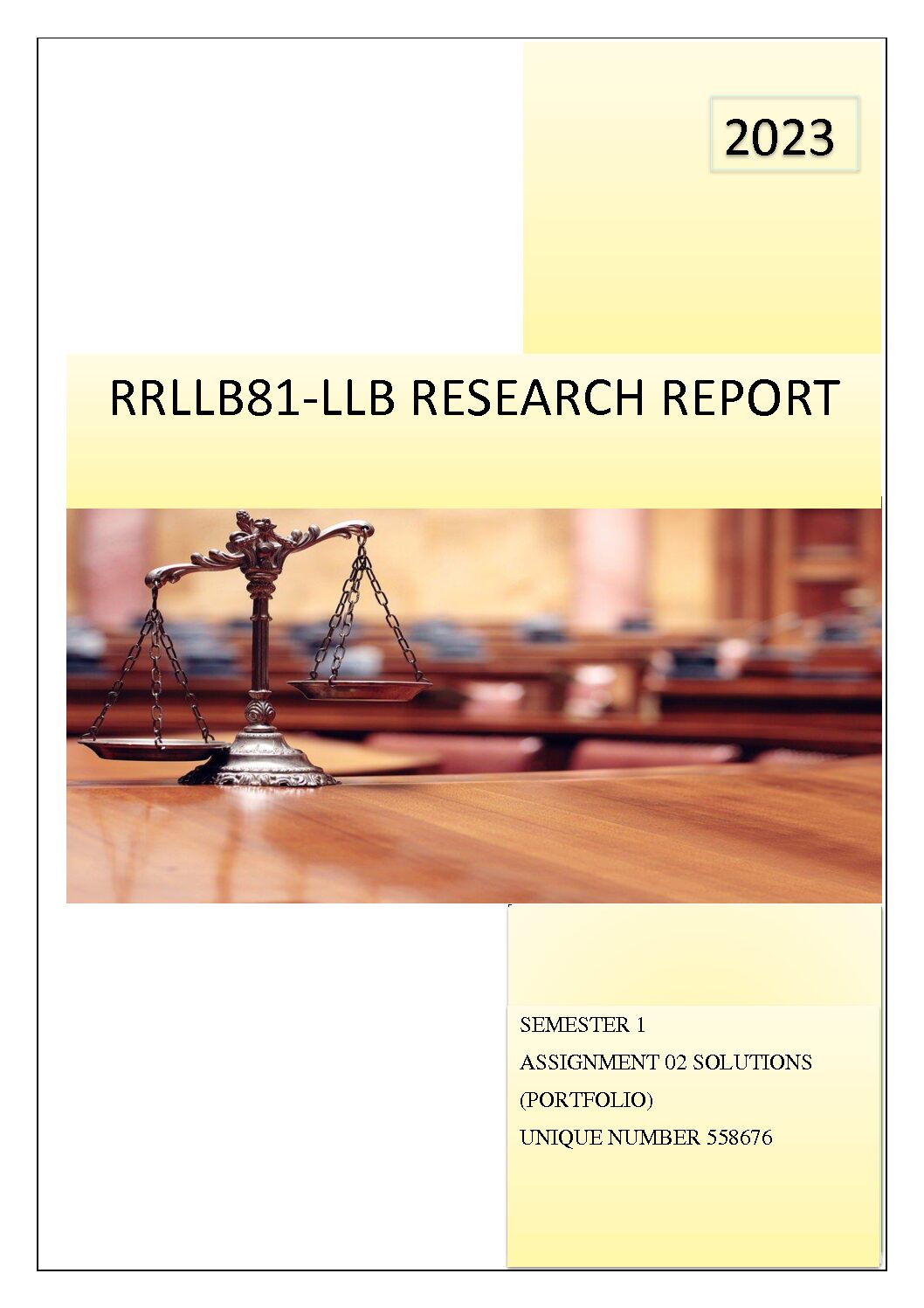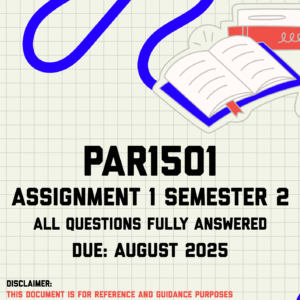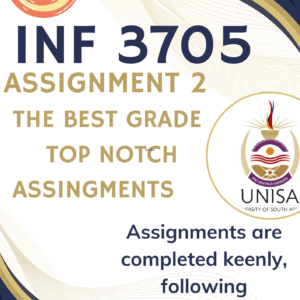Description
LSH4801 Portfolio 2024. All questions answered. Question 1
1.1. Clinical laboratories routinely process specimens containing pathogenic microorganisms
that require precise identification. Explain how you would apply immunofluorescence to identify
Streptococcus pyogenes isolated from a patient sample and explain how you would differentiate
it from other morphologically similar streptococci and staphylococci. 1.2. Explain the clinical rationale for the use of a rapid test procedure such as the Enterotube II
system for the identification of enteric microorganisms. 1.3. Your 20-year-old cousin was informed following a physical examination that her blood test
for syphilis was reactive. She indicated that she was a virgin and had never received a blood
transfusion. A repeat Rapid Plasma Regain (RPR) test was positive, but the Treponema
pallidum immobilization (TPI) test was negative. Explain these strange results and the clinical
status of your cousin.
Question 2
2. A patient was admitted to a hospital with urinary tract infection, and antibiotic sensitive
Klebsiella pneumoniae were identified. During hospitalization the patient became nonresponsive
to antibiotic therapy, and the new isolates of K. pneumoniae were now resistant to ampicillin and
kanamycin. Stool cultures of all patients in the ward revealed that several of them carried E. coli
which was also resistant to ampicillin and kanamycin. You are in charge of determining if K.
pneumoniae somehow acquired an R-plasmid from E. coli. Describe the molecular tools that one
would use to prove the plasmid transfer hypothesis.
Question 3
3. People with acquired immunodeficiency syndrome (AIDS) are vulnerable to toxoplasmosis
caused by the protozoan Toxoplasma gondii, resulting in infection of the lungs, liver, heart and
brain and often leading to death. About 25% of the world population is infected, usually without
developing symptoms. Explain the underlying reasons why people with AIDS are so susceptible
to this disease.
Question 4
4. On returning from a trip overseas, Karabo had a persistent diarrhoea, and she was later
diagnosed with having Entamoeba histolytica infection. Faecal examination reveals the presence
of blood in the stool, suggesting damage to the intestinal mucosa. Explain why and how the
mucosa was compromised by this parasite.
Question 5
5. A female patient develops candidiasis following prolonged antibiotic therapy for a bladder
infection caused by Pseudomonas aeruginosa. Elaborate on the development of this concurrent
vaginal infection.
Question 6
6. The release of phage particles from the host bacterium always occurs by lysis of the cell and
results in the death of the host. Animal viruses are released by either the lysis of the host cell or
exocytosis, a reverse pinocytosis. Regardless of the mechanism of release, most of the infected
cells die, while other viruses may escape the cell without damaging the host cell. Discuss the
mechanisms of viral release and their impact on host cell survival.
Question 7
7. Read the attached article ( summary by addressing the following questions:
7.1. What is a retrospective study? Please explain in your own words with reference to the
article provided.
7.2. Address the issue of HIV and co-infections with reference to HIV pathogenesis.
7.3. What was the rationale for carrying out the study?
7.4. Describe the significant outcomes of the study.
7.5. Criticize the work done by these authors. Explain what you would have done differently
suppose you were the investigator carrying out the study.







































![ENG2603-All-in-One Exam Pack [2023]](https://studypass.co.za/wp-content/uploads/2022/12/1-38-300x300.png)



Reviews
There are no reviews yet.